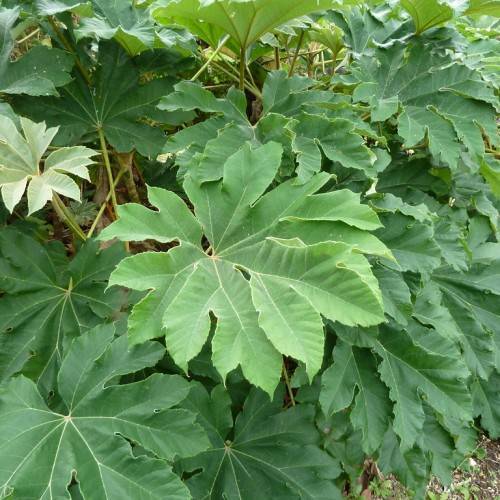
rice-paper plant
Tetrapanax papyriferum
Cycle:
Perennial
Watering:
Average
Hardiness Zone:
8 - 10
Flowers:
Flowers In Autumn
Sun:
Full sun
Leaf:
Yes
Growth Rate:
High
Maintenance:
Low
Drought Tolerant:
Yes
Thorny:
Yes
Care Level:
Medium
watering
The Rice-paper Plant requires a high level of moisture and should be watered about once a week. If the location of your plant is particularly warm, it may need to be watered more often. To check if the plant needs water, simply press your finger into the top inch of soil. If the soil feels dry, it's time to water. When watering, it is best to apply enough water so that it comes out of the drainage holes in the bottom of the pot. Let all the excess water drain, and then empty any that may remain in the saucer. Fertilizing is also recommended, with a diluted watering-soluble fertilizer used every 4-6 weeks during its growing season.
sunlight
Tetrapanax papyriferum thrives in full sun to partial shade environments. When grown outdoors, it should be placed in an area that receives 6-8 hours of direct, full sunlight on a daily basis. An east-facing location is optimum, as it will get morning sunlight to fuel the plant’s growth while keeping it in the shade during the hottest part of the day. When grown indoors, place the plant close to a south- or east-facing window, where it can receive plenty of sun throughout the day.
pruning
The rice-paper plant (Tetrapanax papyriferum) should be pruned during the late winter or early spring when it is dormant. The amount of pruning will depend on the size and shape desired but in general the plant should be lightly trimmed or shaped, removing old, dead wood. Which can be done with either hand pruners or a lopping shear. If the plant is becoming overgrown, more extensive pruning may be necessary. Pruning should be done selectively and always done with consideration to the plant's natural shape.
